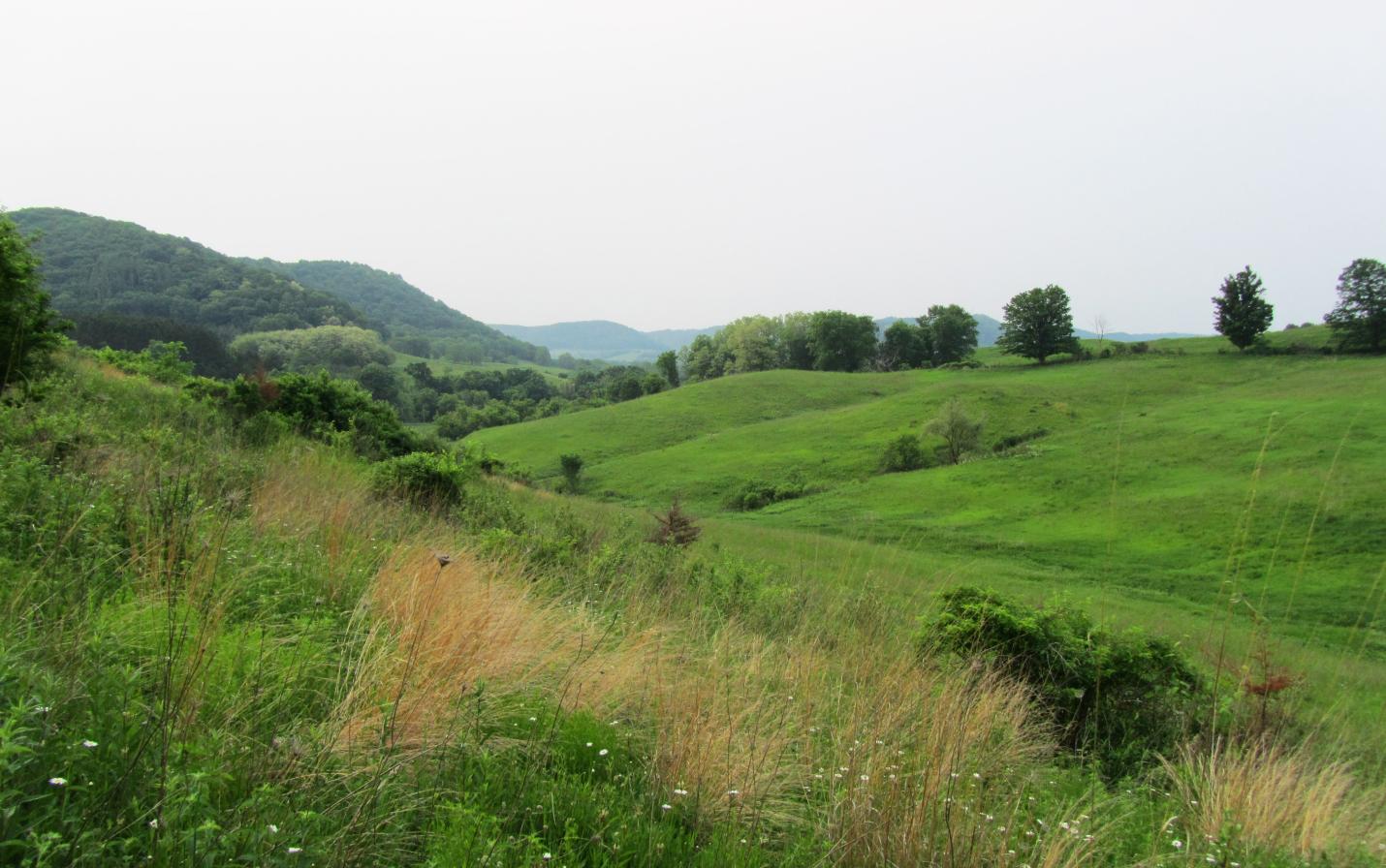
As we witness species decline and anticipate the human population shift in this time of climate change, conserving precious habitats for the sake of wildlife, water, and recreation is more valuable than ever. Thankfully, many landowners partner with the Conservancy to protect their land from future development. There are also times when land acquisition is the only alternative. In the case of the Tunnelville Cliffs nature preserve, we were especially fortunate to acquire most of the land through a generous donation.
The 1,270-acre preserve is comprised of a variety of habitats including woodlands, savannas, prairies, grasslands, and wetlands as well as a portion of the Kickapoo River – each supporting diverse plant and wildlife communities. The sky above this nature preserve is also exceptionally dark, making it a desirable place for creatures of the night, such as bats, owls, and migrating birds.
Land acquisition is only the first step
Acquisition of this large property in the ancient Kickapoo River Valley was only the first step in its conservation. Since 2009, the Conservancy has opened the Tunnelville Cliffs nature preserve for public recreation and has worked to enhance and restore the land for ecological diversity with special consideration for rare and declining habitats and species. Restoration of prairie, oak woodland, and savanna through brush clearing, invasive species control, forest stand improvement, and prescribed burning has been conducted over the years. All of these practices support biodiversity while increasing the land’s resilience to abnormal weather events, its ability to help prevent flooding by retaining water, and its ability to store carbon.
Habitat restoration and maintenance can be a slow process when managing large acreages, so our initial restoration efforts focused on the rarest habitats – the dry prairie and oak savanna. As restoration of the prairies and savannas progressed, we have slowly expanded the prairies by increasing our use of managed fire to enhance their growth.
In addition to generous member and volunteer support, funding for the restoration work has been provided by the WDNR Wild Turkey Stamp Program, Wisconsin Habitat Partnership Fund, NRCS Environmental Quality Incentives Program (EQIP), and WDNR Landowner Incentive Program (LIP). In just the last year, restoration activities on the preserve have included approximately 6 acres of brush removal, 15 acres of invasive species control, 10 acres of forest stand improvement, and 235 acres of prescribed burning. These efforts were largely completed by Conservancy staff and interns throughout the year. The additional help of nearly 30 volunteers contributed to seed collection, prescribed burning, brush removal, and invasive species control.
Caring for the wild requires ongoing care of the land
Our restoration efforts have come a long way in the last 17 years and have been guided by our land management plan for the property as well as a number of forest inventories and academic research projects over the years, yet there is no end in sight for our management of the preserve. Wildlands and habitats require ongoing maintenance and restoration if they are to exist for the next generation. Some areas of the preserve will see increased use of prescribed fire in the coming years to limit the growth of woody plants while other areas may require planting trees to promote habitat for a specific rare or declining species.
Since acquiring this property, the Conservancy has added land management staff and our crew is continuing to expand with our increased acreage throughout our service area, but we will always rely on the additional help of volunteers throughout the year on all of our preserves. If you’re interested in helping us to restore the native habitats at Tunnelville Cliffs or at any of our other nature preserves throughout our 9-county service area, please visit our website and sign up as a volunteer!